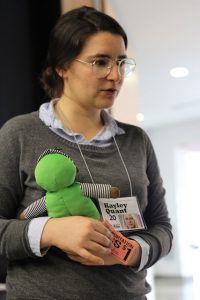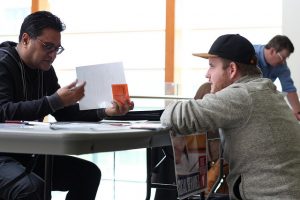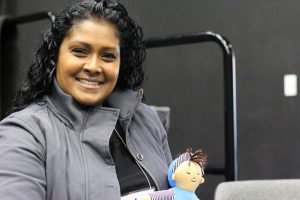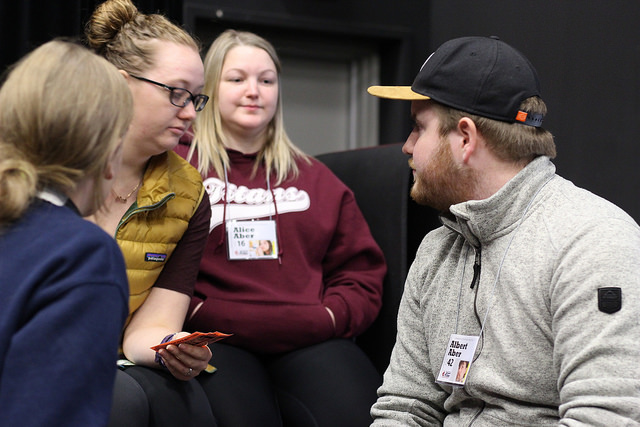
Camille Ricketts is a fourth-year UFV Bachelor of Science in Nursing student who is involved in her community as an advocate for health promotion. She is well on her way to a promising career in health care.
As part of her nursing education requirements, Ricketts and her classmates imitated the experiences of those living in poverty. As part of UFV’s interdisciplinary poverty simulation activity between the School of Health Studies and the School of Social Work, students were placed in mock situations where they had to navigate the realities of living in need.
The exercise helped students reflect on their perceptions of people living in low income situations. “As a nursing student, the simulation activity helped me develop a deeper empathic view of poverty,” says Ricketts.
Upper-level students from the Bachelor of Science in Nursing and Bachelor of Social Work were paired together into groups of four to address poverty-related issues. Each group resembled a family living in poverty and students were asked to become acquainted with the needs of each family member.
Some situations included navigating public transportation and income assistance programs, purchasing food with vouchers, dealing with child behavior issues, the court system, paying monthly rent and utilities, balancing work and childcare, and accessing health care or social services.
“As future nurses, the exercise shows us how to connect people living in low income situations to the resources they may need in the community and in the health care system after they are discharged from the hospital,” notes Ricketts.
“Poverty is one of the most significant social determinants of health,” says Darrell Fox, a UFV social work professor. “Students are able to experience the reality of poverty in a safe environment and gain insight into how social issues will be experienced by their future clients.”
“During the simulation, we are placing ourselves in the shoes of someone living in poverty,” says Prettee Arm, a UFV social work student. “As social workers, it is important we understand how to work within the individual needs of our clients.”

Faculty members from Nursing and Social Work participated in the activity by acting as employees of community services, local businesses, and government organizations.
Social workers and nurses often work together on interdisciplinary health care teams. “Collaboration of social workers and nurses can be strengthened when they have a deeper understanding of each other’s roles,” notes Lisa Almos, a UFV nursing professor. “Interprofessional collaboration fosters a sense of role clarity for students, sheds light on challenges each member of the team experiences, and ensures patients receive the care they need.”
The experience is meant to sensitize students to the realities of poverty and demonstrate how health and poverty are linked to social and economic determinants such as safe housing, employment, food, environment, culture, gender, and education.
The community action poverty simulation is one of many intra-professional learning opportunities students at UFV engages in.

